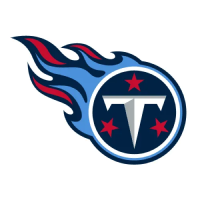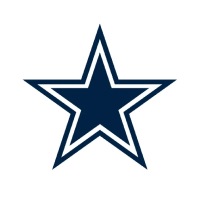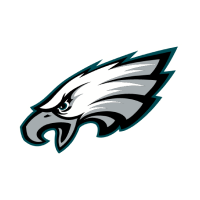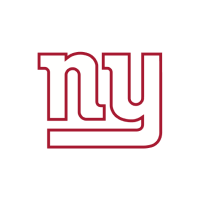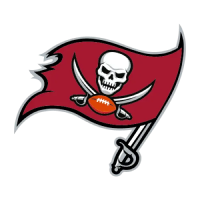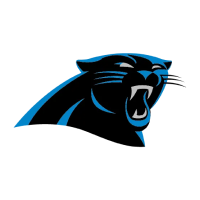As the 2021 NFL Draft nears, it’s become increasingly apparent: it is an offense-heavy draft. The QB class is perhaps the best in a decade, the WR class brings top talent and depth, and following a historic 2020 offensive tackle comes another group worthy of several first-round picks.
That the tackle class is strong for a second consecutive year could have massive ripples across the next generation of offense in an increasingly pass-heavy league. Just four years ago, across the 2017 season, the NFL couldn’t block anybody. It was the first year in which scoring has gone down in a decade, and soaring pressure rates seemed to be the primary culprit. Defenses got wise to the value of a pressure or quarterback hit, as pass-rushers fired faster off the ball than ever before, and blindside protectors were left in the dust.
The league needed answers; they couldn’t find any in the draft. As Peter King wrote for Sports Illustrated in the 2016 offseason, the success rate of early-drafted OTs bottomed out in the 2000s, and especially into the 2010s, when the 2011 CBA cut down on practice time for NFL teams. From 2012 to 2014, top-10 picks were spent on Matt Kalil, Eric Fisher, Luke Joeckel, Greg Robinson, Jake Matthews, and the saving grace of the group: Lane Johnson.
There were some bright spots, however. Players like Taylor Lewan, Riley Reiff, D.J. Fluker, and Ja’Wuan James went in the latter part of the first rounds in the mid-2010s. The 2016 class delivered Ronnie Stanley, Jack Conklin, Laremy Tunsil, and Taylor Decker all in the top 16. In 2013, two of the best tackles in the NFL—David Bakhtiari and Terron Armstead—were picked after the second round.
But those hits did not change the perception around early-drafted OTs, and accordingly, around offensive tackle classes as a whole. There was still trepidation surrounding the myth of the NFL-ready offensive tackle, worthy of a top-10 pick and ready to contribute in Week 1. Teams started prioritizing high-caliber athletes at the end of the first round and on Day 2, anticipating the need to develop at the position and choosing to prioritize raw athletes with high-caliber traits: Kolton Miller, Andre Dillard, Garret Bolles.
Then the 2020 tackle class hit. Andrew Thomas, Jedrick Wills, Mekhi Becton, Tristan Wirfs. Four players in the top-13 picks, three of them immediate sensations on their respective offensive lines, and the fourth (Thomas) improved after some worrisome struggles to start his rookie season. Sure, there were still some early-round dart throws at developmental guys (Isaiah Wilson, Austin Jackson) that have yet to pan out: but the immediate impact of the 2020 offensive tackle class is difficult to overstate.
But a blip on a radar is just that: a glitch, an error. A second such class would strain the assumptions of coincidence.
That second class may just be the 2021 group. Oregon’s Penei Sewell and Northwestern’s Rashawn Slater are expected to go in the top-15 range, and the rest of the first round will be peppered with any combination of Oklahoma State’s Teven Jenkins, Virginia Tech’s Christian Darrisaw, Notre Dame’s Liam Eichenberg, Texas’ Samuel Cosmi, Michigan’s Jalen Mayfield, and North Dakota State’s Dillon Radunz. The premium on quality tackles that the NFL draft struggled to answer in the mid-2010s remains to this day, but the 2021 class is well-equipped to answer it.
With back-to-back strong offensive tackle classes under our belt, we must return to our question from a few years ago: “Where are all the good tackles?” and ask the necessary follow-up: “Has anything changed? And if so, what?”
There were plenty of reasons offered for the tackle drought of the 2010s. The practice time limitations of the 2011 CBA were a big one, as ex-NFL offensive lineman Geoff Schwartz told Robert Mays and the Ringer: as two-a-day practice disappeared, so did critical, cohesion building hours of offensive line install. The individual traits of a tackle prospect aside, he can only be so good if he doesn’t know what the guard beside him is doing. Offensive lines exist, and good ones excel, in harmony. Take away their time to gel, and that harmony is belated, and still fragile when it arrives.
The onset of spread systems at the college level was another one. The 2010s saw a craze of offensive innovation at the NCAA level, as Chip Kelly’s turbocharged pace, Art Briles’ vertical choice passing game, and of course, the RPO explosion all lessened the strain on offensive line development for college coaching staffs. A tackle’s true pass sets mattered less with every RPO a team ran, as now, a tackle was just pass-blocking. For every passing design that offered only one read for a quarterback, the ball came out quicker, and a tackle now had to block for a shorter time frame. And of course, if the hurry-up offense caught a defense scrambling to get set, the tackle wasn’t threatened by a snap-anticipating speed rush.
The scheme considerations give us a clear understanding of how wisdom moves in football circles: from the bottom up. After Kelly’s success in college, he was hired up to the NFL ranks. But even as he flamed out, many of his ideas and influences remain—just as the RPO, popularized at the lower levels, is now recognizable to average football fans. Colleges got good at generating offense without elite offensive line play; now the league is doing it as well.
But this borrowed invention isn’t the only one. The necessity of offensive line development, neglected at both the pro level (with limited practice time) and college level (with offenses that didn’t need good OL play), created a gap that’s been filled by private offensive line coaches such as Duke Manyweather and LeCharles Bentley; summits of pro offensive linemen like OL Masterminds. If their teams didn’t have the time, resources, or staff necessary to develop them, they’d find solutions elsewhere.
In this sense, tackle prospects are better now than they were five years ago. Position-specific training helped translate the mouthwatering athletic ability of Wirfs and Becton into actionable on-field dominance, at a position notorious for athletic flameouts who lack the technique to survive in the league. The additional resources available give these rookies a competitive edge unavailable in the past.
But coaching, development, and even scouting are all smarter than they were five years ago, too. With NFL offenses adopting collegiate philosophies, it’s easier for scouts to determine scheme fits from the college level; with more years of data on these new approaches and practice limitations, the pitfalls to avoid are easier to identify. The premium on quality offensive line coaches like Mike Munchak (hired from Pittsburgh to Denver to help fix Garett Bolles) and Bill Callahan (hired from Washington to Cleveland to execute Kevin Stefanski’s diverse vision in the running game) has never been higher. Tackles are getting better for the league, but the league is getting smarter at finding the good ones, too.
It’s 2021, and the league is figuring out how to block guys. The pendulum is swinging back the other way, and since it will inevitably return the other way, it’s important for teams to attack this golden window of tackle prospects while it remains open. For a premium position without many young stars over the last few years, a sudden influx of talent could spell the changing of the guard of top performers at tackle in the NFL.
Filed In
Related Articles
NFL Draft
Arik Gilbert Doesn’t Need Big Workload To Be A Top NFL Draft Pick
- Aug 22, 2022
NFL Draft
2023 NFL Mock Draft: Marino 1.0
- Aug 22, 2022
Written By









